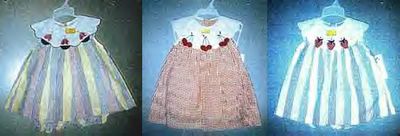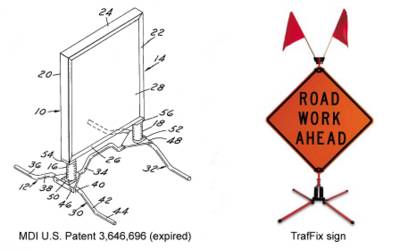Recommended Reading: Best Practices for Registering Product Configuration Trade Dress
In "Trade Dress 101: Best Practices for the Registration of Product Configuration Trade Dress with the USPTO," 95 Trademark Reporter 1374 (November-December 2005), authors Karen Feisthamel, Amy Kelly, and Johanna Sistek provide helpful advice on how to register product configuration trade dress.

The authors first discuss the two main "hurdles" to registration of product configuration trade dress -- functionality (TrafFix) and distinctiveness (Wal-Mart) -- and review the current PTO examination approach to these issues. Moving from theory to practice, they then peruse the file histories of a number of successful applications for registration in order to determine what Section 2(f) evidence (if any) was required by the Examining Attorney to support registration. Finally, they offer tips for conducting a clearance search vis-a-vis a product configuration mark.
The authors suggest that counsel contemplating the filing of such a product configuration application first review the applicant's patent portfolio and advertising materials to determine whether the product configuration trade dress "was previously covered by a utility patent" and whether the applicant has promoted the utilitarian advantages of the configuration. They suggest that, as a result, counsel may recommend that applicant "modify its advertising to promote the produce configuration trade dress as a source identifier (i.e. 'look-for' advertising) rather than as a source of a utilitarian advantage." (p. 1390). [TTABlog comment: if the boastful advertising has already run, modification is surely too late; and there's not much to be done about the patents.]
Trademark practitioners are not often called upon to register product configuration trade dress. This article provides a welcome refresher course on product configuration law and practice.

TTABlog note: For a discussion of the TTAB's approach to trade dress issues since Wal-Mart and TrafFix, I immodestly suggest my own article entitled "Trade Dress and the TTAB: If Functionality Don't Get You, Nondistinctiveness Will," 18 Allen's Trademark Digest 5 (November 2004). [An updated but condensed version appears as Section II.C. of my article, "The TTAB in 2004: What Was Hot, What Was Not," 19 Allen's Trademark Digest 1 (July 2005).] In the earlier version, I observed:
"Trademark practitioners, given the opportunity, would advise trade dress clients to avoid "touting" advertising and instead to make use of 'look for' advertising that emphasizes that the design in question is a trademark. Unfortunately, owners of purported trade dress tend to seek the advice of their trademark lawyers only after the success of the product has been established in the marketplace, and by then the 'damage' has often been done, for example, in the form of boastful advertising." 18 Allen's Trademark Digest 5, page 20.
BTW: Neither the TTAB nor the CAFC has issued a precedential decision in the trade dress area since 2004.
TTABlog Thank You: to The Trademark Reporter for granting permission to the TTABlog to provide a link to the Feisthamel et al. article. The article is Copyright © 2005 the International Trademark Association and is reprinted with the permission of The Trademark Reporter®, 95 TMR 1374 (November-December 2005).
Text Copyright John L. Welch 2006.




0 Comments:
Post a Comment
<< Home